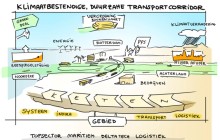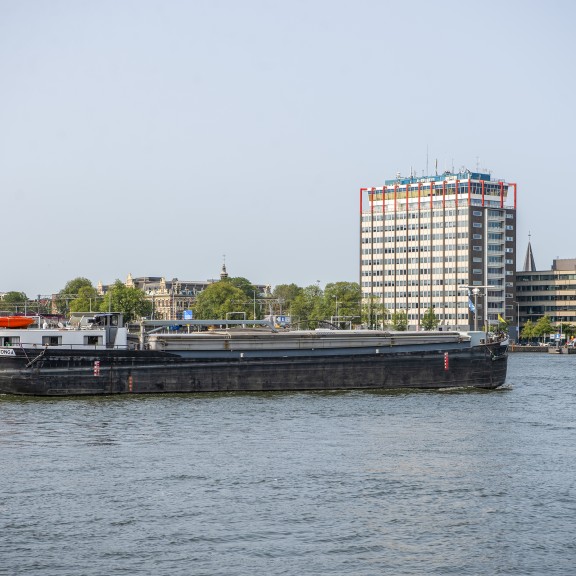

Inland shipping and climate change
Recent years have shown that climate change also has its effects on inland shipping. Both high and low tides can disrupt inland navigation. Effects can include not being able to sail in January because the Oranjesluis was blocked, or sailing with less cargo per ship.
The change is structural in nature; more severe weather extremes are actually going to occur more often in the future, and that's why incidents due to high or low water must be taken into account.

For Port of Amsterdam, inland shipping is an important modality for transport to and from the hinterland, both nationally and internationally. In 2022, 64.5 mln tons of cargo was transported by inland navigation in the North Sea Canal area and 36,439 inland vessels visited one of the ports in the area. Inland shipping accounted for 54% of total hinterland transport to and from the North Sea Canal area in 2022.
Port of Amsterdam partner of TRANS2 project
In order for a port to remain easily accessible for inland shipping in the future, it is important to gain more insight into the effects, to get a picture of how the sector is responding to the changes and what might be required of ports. This is why Port of Amsterdam has joined the TRANS2 project (TRANSition to a climate-proof Rotterdam hinterlandTRANSport).
A consortium of 14 parties (including the Ministry of I&W, Rijkswaterstaat, Port of Rotterdam, Koninklijke Binnenvaart Nederland under the coordination of Deltares) is working on an integrated picture of inland shipping logistics and a climate-proof transport system. With a group of experts, fleet developments and transition paths are being visualized and an assessment is being made of the extent to which a future-proof fleet, from the perspective of climate change, is coming about and what is needed to maintain or even increase capacity and reliability.
This cooperation is primarily focused on getting a better grip under a changing climate, although inland navigation also faces other major challenges. Climate-adaptive solutions are tested, if possible, using the so-called Digital Twin Waterways and the System-Dynamic (SD) model.
For example, the industry is having less deep-sided ships built to be less affected by low water.A more climate-resilient fleet reduces the likelihood of delays. Adjustments in the fleet together with changes in the fairway due to climate change become inputs to the SD model that determines freight delay.